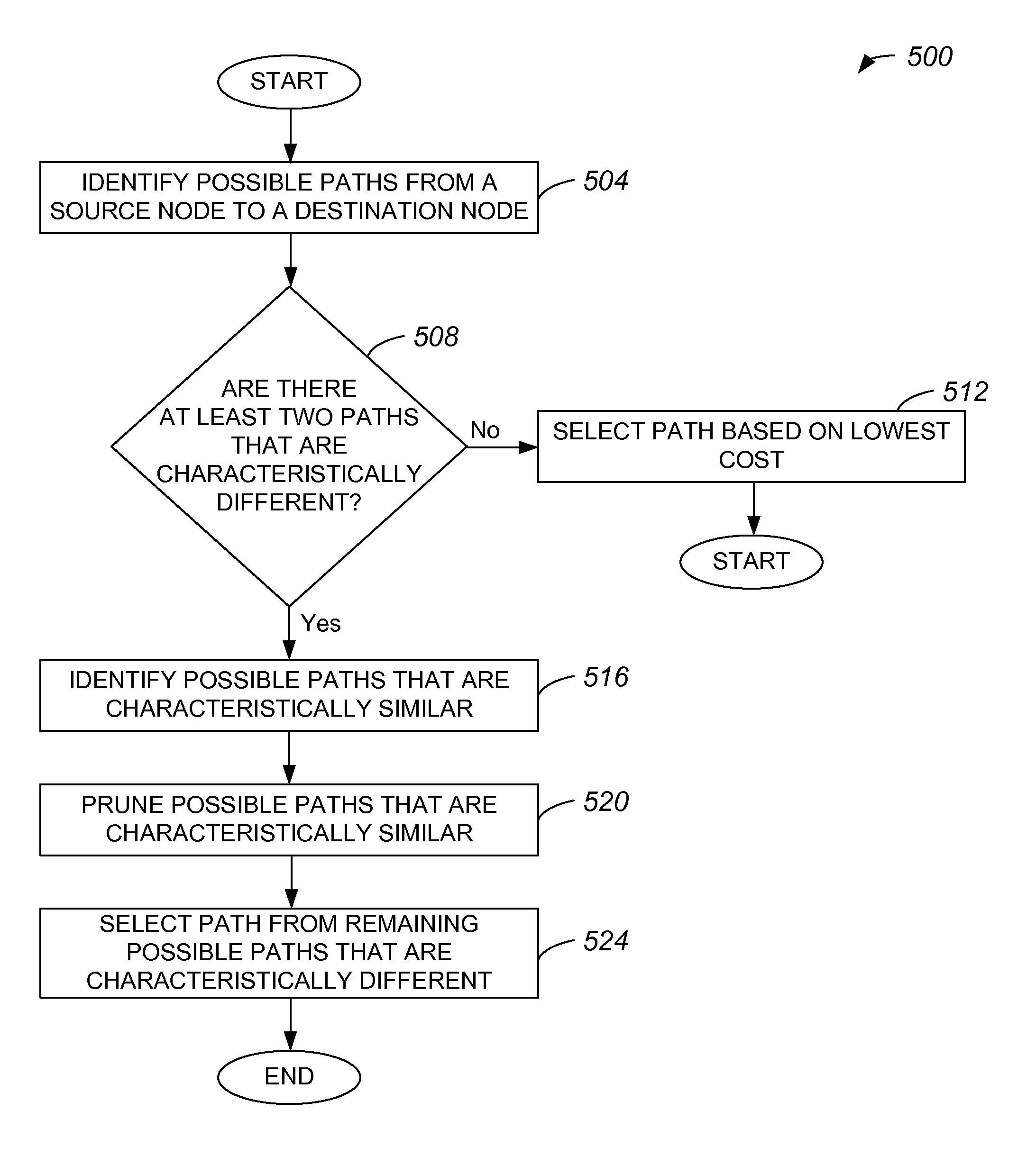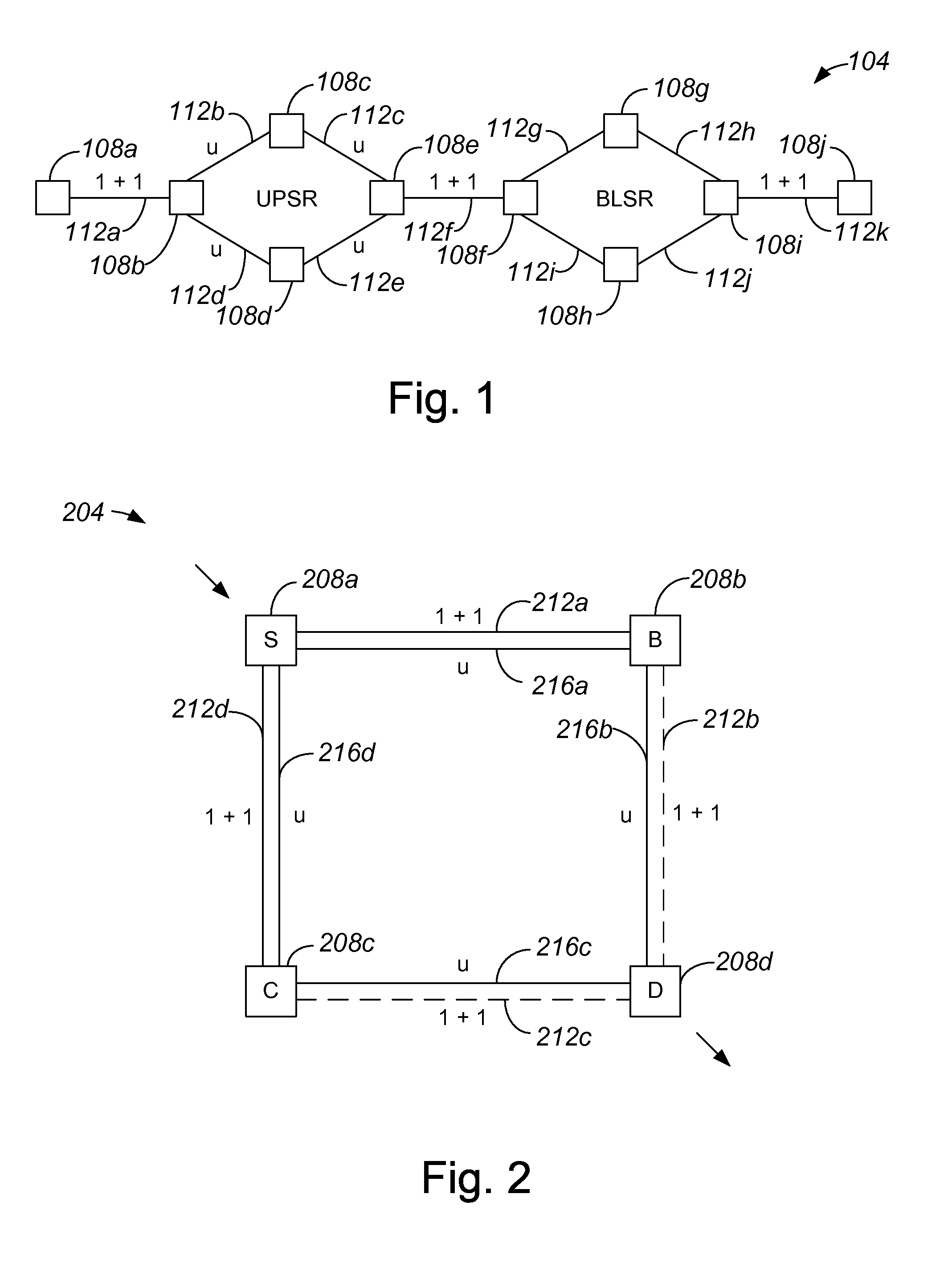Method and apparatus for computing primary and alternate paths in mixed protection domain networks
- Summary
- Abstract
- Description
- Claims
- Application Information
AI Technical Summary
Benefits of technology
Problems solved by technology
Method used
Image
Examples
Embodiment Construction
[0035]Within a network such as a time division multiplexed (TDM) network which is subject to synchronous optical network (SONET) standards, networks often include mixed protection domains. That is, networks often are not either completely protected or completely unprotected, and may not easily be divided into multiple domains. Conventional shortest path first (SPT) algorithms are generally not capable of routing circuit paths within networks which have mixed protection domains. As such, when efficient paths, or paths which have a low cost, are to be routed in mixed protection domain networks which may not be easily divided into multiple domains, network administrators often must create paths manually, which is typically an inefficient process.
[0036]An SPT which identifies substantially all possible paths from a source node to a destination node within a network with a mixed protection domain may eliminate some paths from consideration in routing data from the source node to the dest...
PUM
 Login to View More
Login to View More Abstract
Description
Claims
Application Information
 Login to View More
Login to View More - R&D
- Intellectual Property
- Life Sciences
- Materials
- Tech Scout
- Unparalleled Data Quality
- Higher Quality Content
- 60% Fewer Hallucinations
Browse by: Latest US Patents, China's latest patents, Technical Efficacy Thesaurus, Application Domain, Technology Topic, Popular Technical Reports.
© 2025 PatSnap. All rights reserved.Legal|Privacy policy|Modern Slavery Act Transparency Statement|Sitemap|About US| Contact US: help@patsnap.com



